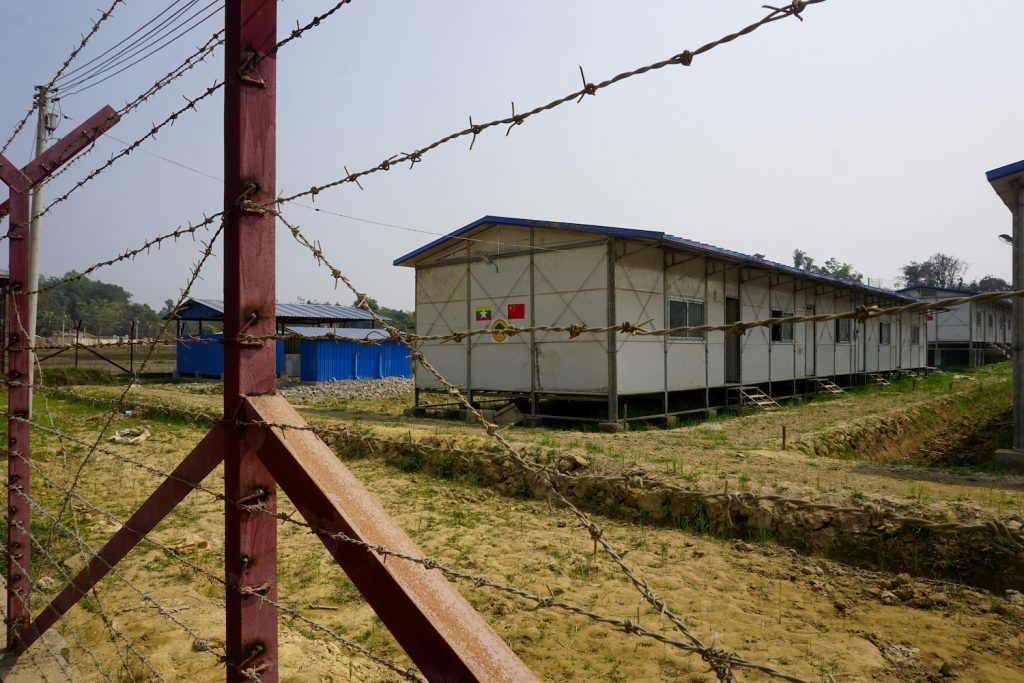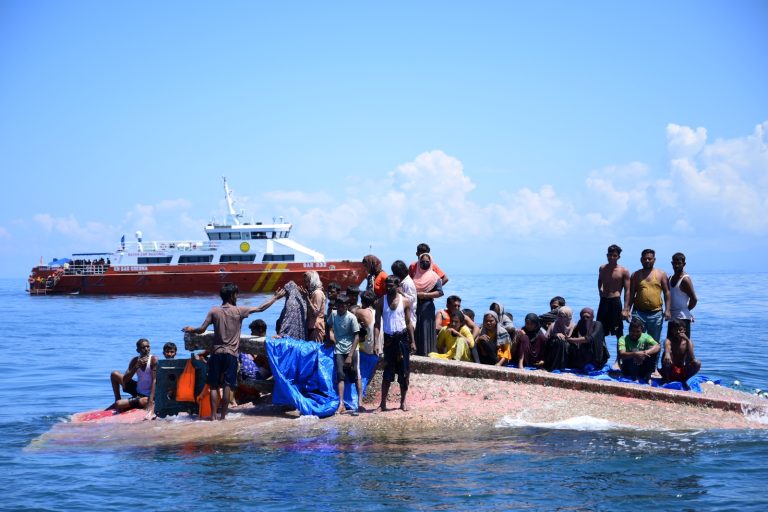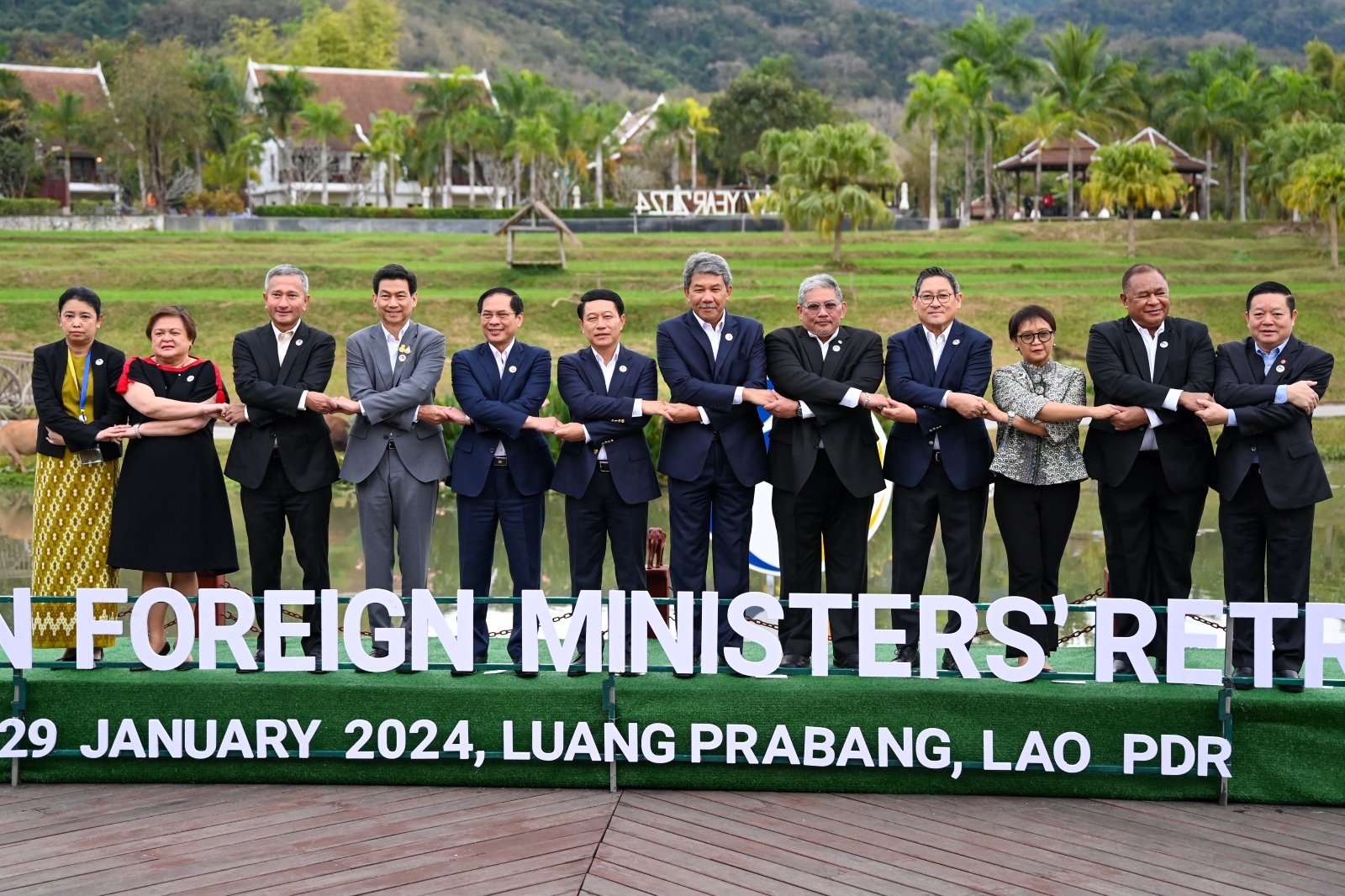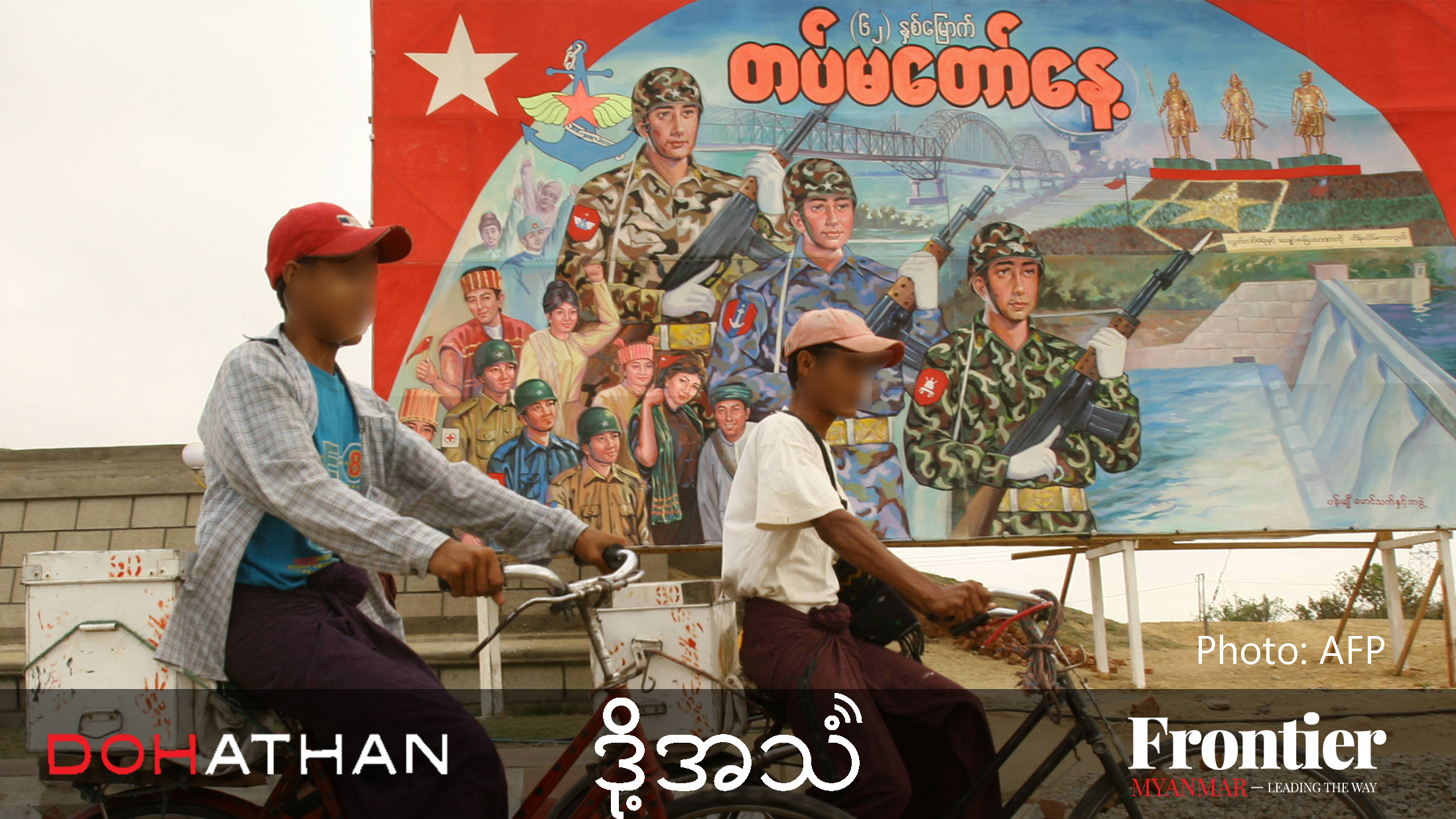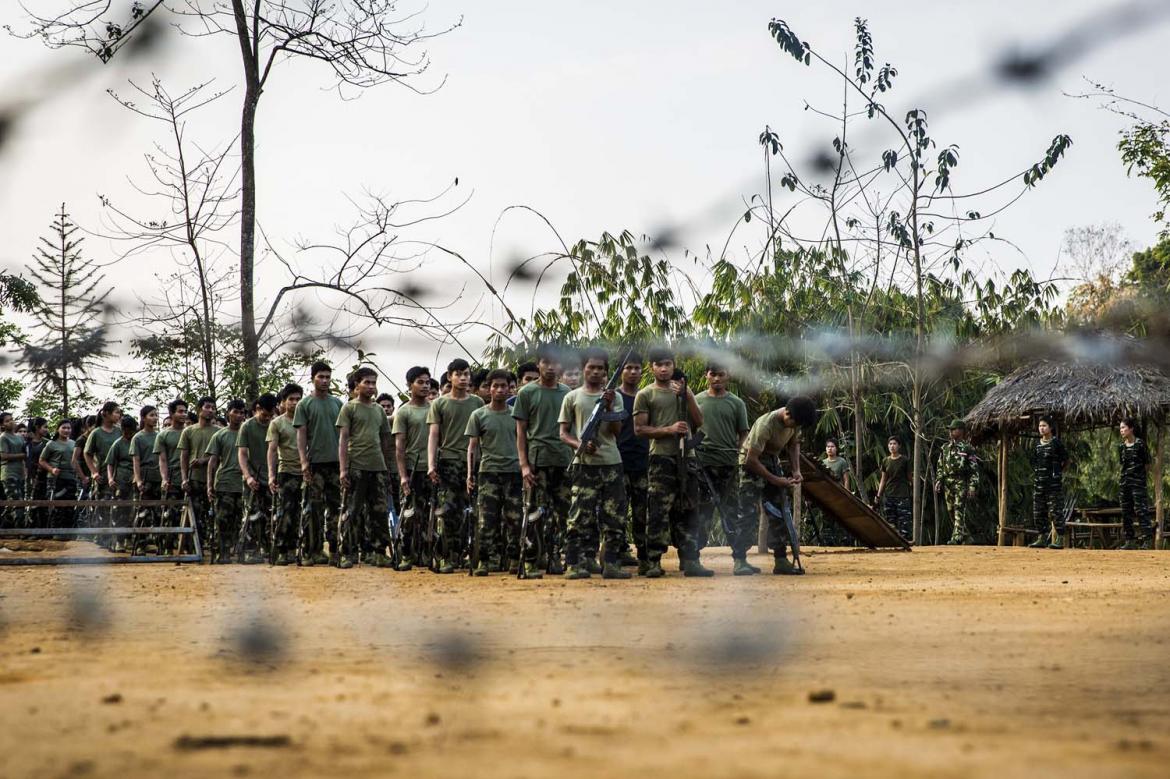China needs to change its mistaken approach towards resolving the miserable plight of the Rohingya. Otherwise, it should get off the stage.
By JOE FREEMAN | AMNESTY INTERNATIONAL
Armed Myanmar Border Guard Police scanned the horizon beyond the rusty bridge to Bangladesh, but months after the crackdown that drove Rohingya women, men and children from their villages in northern Rakhine State, the landscape was eerily quiet.
It was March 2018 and I was on a government-arranged trip for journalists, five months after vicious “clearance operations” forced more than 740,000 Rohingya to flee their homes in terror. Remains of burned-down villages were everywhere, many razed with what appeared to be military precision. Close to where Rohingya refugees in Bangladesh were supposed to return to Myanmar stood new trailer homes displaying stickers of China’s flag.
China is far from being the only country to offer expertise, supplies or funds to Myanmar’s government after the military’s campaign of violence subsided in Rakhine State: the list also includes the United States, United Kingdom, Norway, India, Japan, and Israel. But for a government strident about staying out of the internal affairs of other nations, Beijing’s unusual attempts to play mediator have set it apart from others.
Early on, senior Chinese diplomats announced a three-phase plan aimed at easing tensions; hosted several foreign minister meetings between Myanmar and Bangladesh; reportedly encouraged repatriation with cash incentives for Rohingya refugees; donated trucks to Myanmar to help ferry Rohingya across the border; and tried to facilitate a visit by Rohingya refugees in Bangladesh to Myanmar to investigate conditions on the ground – an idea that Myanmar later rejected. China also helped form a tripartite working group with Myanmar and Bangladesh that held informal talks on the sidelines of last year’s United Nations General Assembly.
Three years after the Tatmadaw launched its ethnic cleansing campaign against the Rohingya, on August 25, 2017, what does the Chinese government have to show for its attempts to broker solutions to the crisis? Not much.
Two large-scale repatriation efforts fizzled out almost a year ago. There has not been another significant push to start repatriation since then. Myanmar-based diplomats say Chinese efforts have focused on starting repatriation, instead of first creating suitable conditions for Rohingya who return.
But there is little domestic political will for repatriation in Myanmar, where elections loom and anti-Rohingya sentiment remains strong among many voters. The security situation in Rakhine and neighbouring Chin State has also deteriorated. Rohingya who did not flee to Bangladesh are caught in the middle of violent clashes between the Tatmadaw and the ethnic Rakhine Arakan Army. That conflict has killed civilians – including children from Rohingya, Rakhine and Chin families. A government-imposed internet shutdown that lasted for more than a year in several townships in Rakhine and Chin states has meant that many of these atrocities go unreported. This month, Myanmar eased internet restrictions in eight townships, but only allowed limited 2G services.
The plight of the Rohingya people in Bangladesh and Myanmar has also faded from view as COVID-19 dominates headlines and leaves governments with even less empathy than they had before. This was illustrated most vividly in recent months when boats carrying Rohingya refugees were initially pushed away as they tried to land in Malaysia.
However, the pandemic provides a rare opportunity for China to reassess its approach to Rohingya mediation. Beijing will always be an important player in the process, despite the current lull in activity.
“I believe that they [the tripartite working group] will become quite active after COVID,” professor Shahab Enam Khan, an international security expert who teaches at Jahangirnagar University in Dhaka and has been involved in some of the bilateral mediation efforts, told me. “I would give it a chance.”
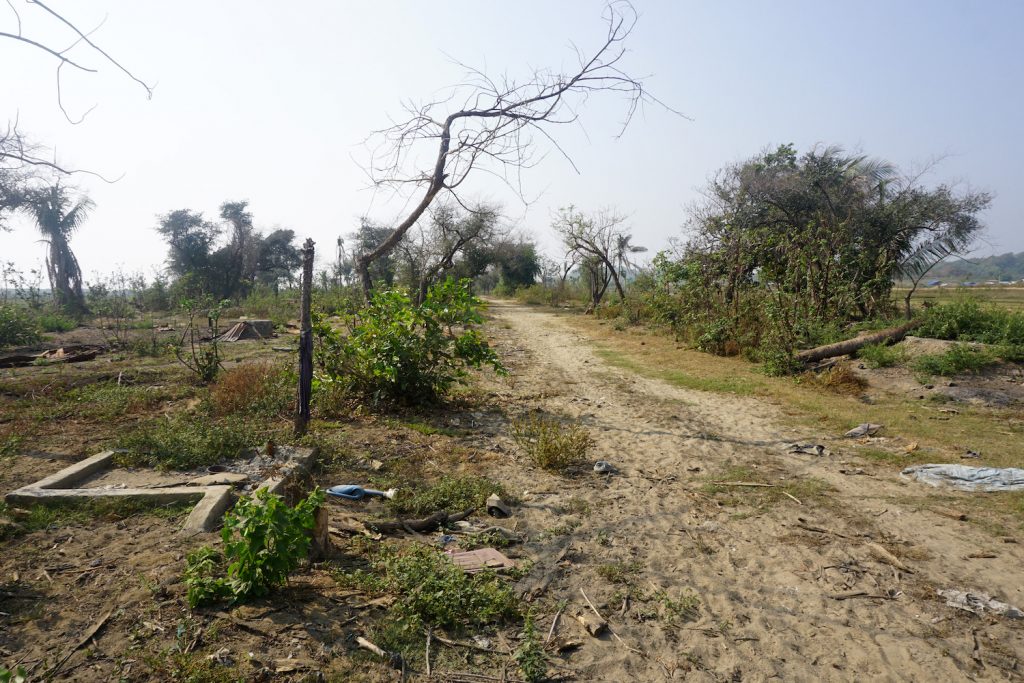
If China wants to help the Rohingya return, it needs to encourage Myanmar to promote the right conditions in northern Rakhine. Myanmar must guarantee safety, freedom of movement and citizenship rights to Rohingya who want to return. The only way to achieve this is to dismantle the apartheid regime in Rakhine. Beijing could push Myanmar to review its 1982 Citizenship Law, the grossly discriminatory legislation that provides the legal framework for denying Rohingya people their rights, as well as to remove other discriminatory laws, policies, and local regulations, orders and practices affecting the community in Myanmar. The Advisory Commission on Rakhine State appointed by the Myanmar government, and led by the late Mr Kofi Annan, recommended in its final report in August 2017 that the government review the 1982 Citizenship Law, and many human rights groups have made similar calls.
Beijing can also stop blindly shielding Myanmar from accountability in international fora, a stance that arguably clashes with its repatriation efforts on the ground. The Rohingya community cannot be guaranteed a safe, voluntary and dignified return until it knows that the murder, rape, torture and arson to which it was subjected three years ago will not happen again. Ending the cycle of impunity is key. During the 44th session of the UN Human Rights Council last month, China’s representative said it would continue to support Myanmar and rejected any “politicisation of human rights issues or open exertion of pressure”. The representative also urged the international community to respect the sovereignty of Myanmar and “contribute to the solution of the question of Rakhine State, and not the contrary”. But China’s government is doing the contrary, because the real solution is justice, truth and reparation.
China’s massive economic interests in Myanmar are part of the problem, and they incentivise cynical and counterproductive trade-offs. Days before State Counsellor Daw Aung San Suu Kyi travelled to The Hague in December 2019 to defend her country against genocide charges in the case filed at the International Court of Justice by The Gambia, China’s foreign minister Mr Wang Yi made a high-profile visit to Myanmar to hold talks with the state counsellor and President U Win Myint. Wang stressed China’s interest in accelerating the China-Myanmar Economic Corridor and the Special Economic Zone in Rakhine’s Kyaukphyu Township, emphasising China’s “unswerving support for Myanmar on the international stage”.
China has continued to help Myanmar with generous donations during the COVID-19 pandemic. But as with past efforts, the quid pro quo between aid and the billions at stake in Chinese-backed projects is not so simple, and it could even backfire. In a bilateral call with Win Myint in May, President Xi Jinping discussed Myanmar’s response to COVID-19 before asking about the implementation of dozens of development projects. The projects were on a list signed by China and Myanmar leaders during Xi’s January trip, and he appeared eager for concrete progress, calling on the two sides to “work closely together to deliver the outcomes of the visit”, according to a readout.
This pattern was established early, throughout the most intense moments of the Rohingya crisis and its aftermath, when China repeatedly sought to protect Myanmar from international scrutiny and attempts to hold perpetrators accountable at the UN. When the Human Rights Council held an emergency session in response to the crisis in late 2017, China called a vote on the resolution – the first time a vote had been called on a resolution on Myanmar at the Human Rights Council since its creation in 2006. It was joined by Burundi and the Philippines (the only two states that have withdrawn from the Rome Statute of the International Criminal Court) in voting against the resolution. Subsequently, China continued various initiatives that undermined the response to the crisis, including unsuccessfully seeking to block the creation of a landmark accountability mechanism at the Human Rights Council in 2018. Using its threat of veto power, China has effectively stopped the UN Security Council from taking any meaningful action to hold the Tatmadaw to account, including referring the situation in Myanmar to the prosecutor of the International Criminal Court.
This continued impunity has permitted the Tatmadaw to commit further crimes under international law and human rights violations against other minorities in Rakhine, Chin, Kachin and northern Shan states, fostering more violent flare-ups that would seem to be at odds with the stability and development model that China champions in Myanmar.
On my trip to northern Rakhine, I saw scenes I will never forget. Homes destroyed to their blackened foundations. Clothes strewn on the ground as people took flight from advancing troops and mobs. Entire villages abandoned as if their inhabitants had vanished without a trace.
As a third year passes since the “clearance operations” of 2017, almost a million refugees remain trapped in Bangladesh and the Myanmar military is still committing human rights violations in Rakhine. If China wants to be regarded as an effective mediator instead of an obstacle to remedying the horrific and shameful treatment of the Rohingya people, it should reflect on and remedy the failures of its approach – or bow out altogether.
This op-ed was written as part of the author’s research on Myanmar for Amnesty International.


